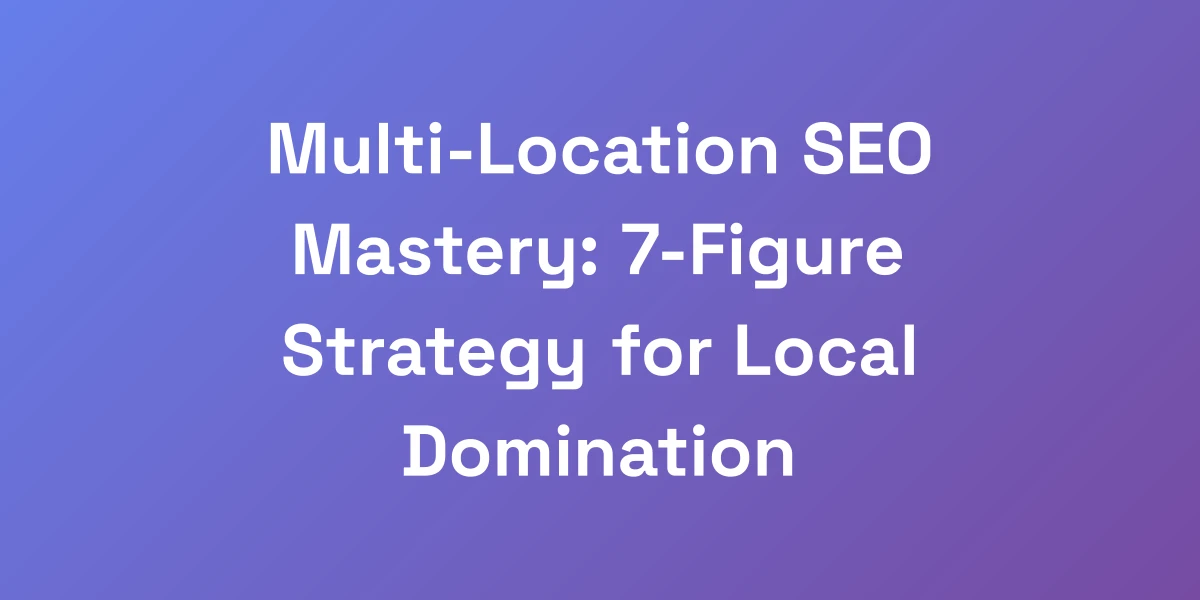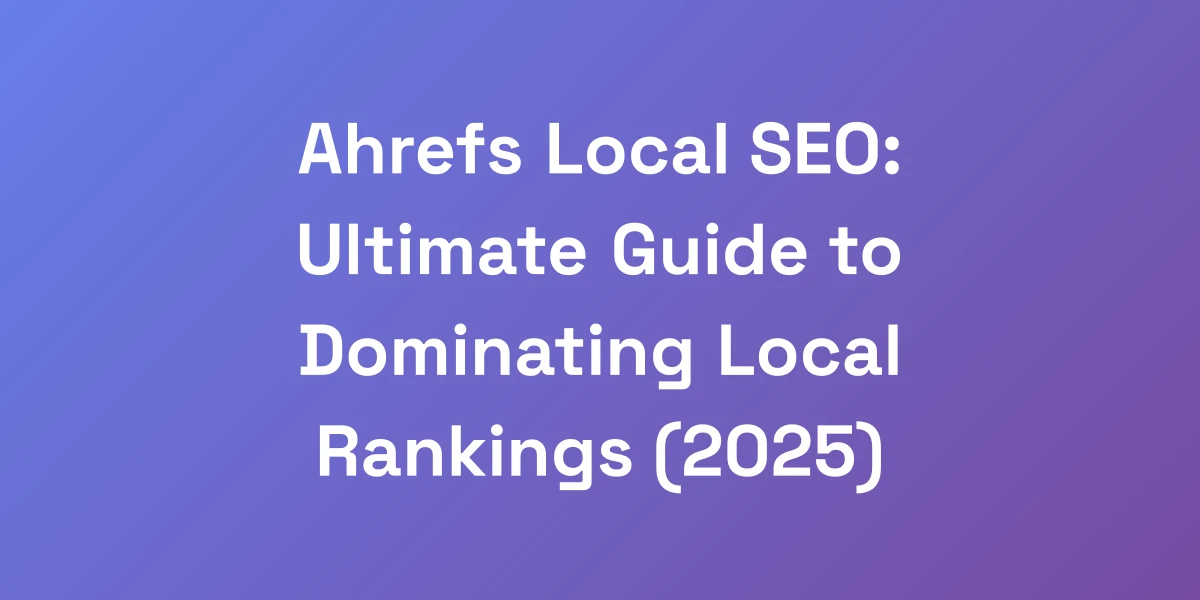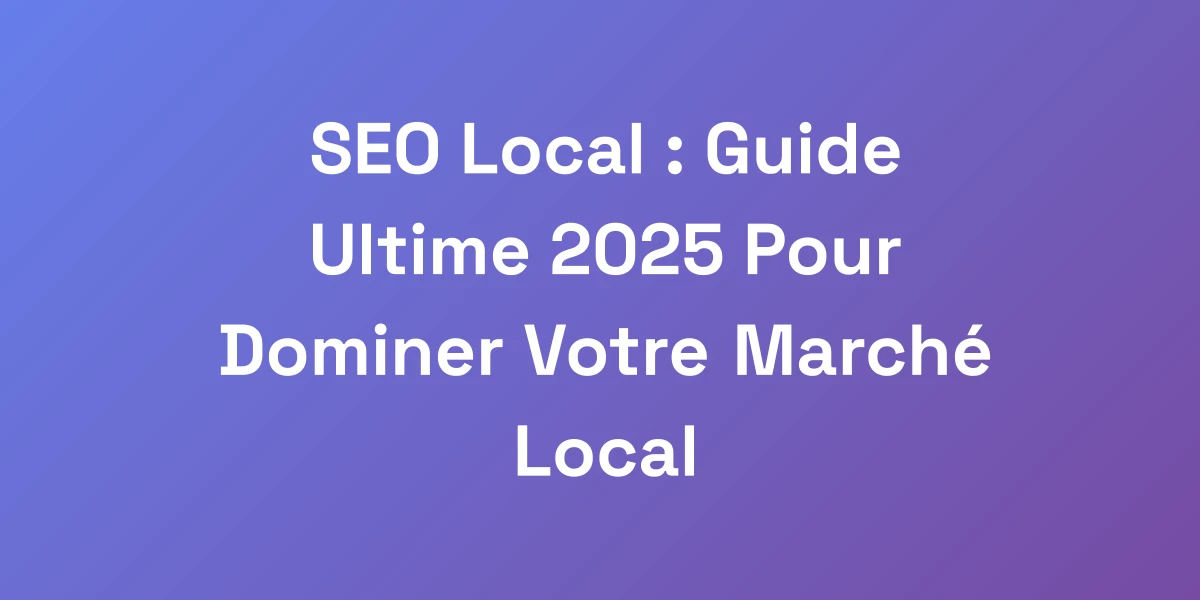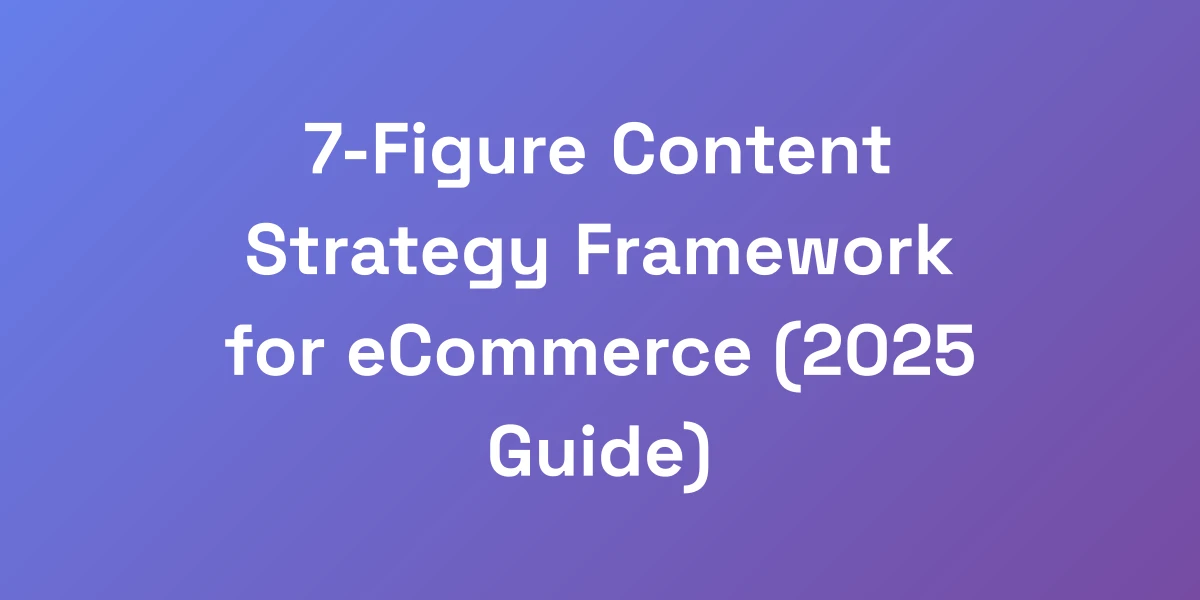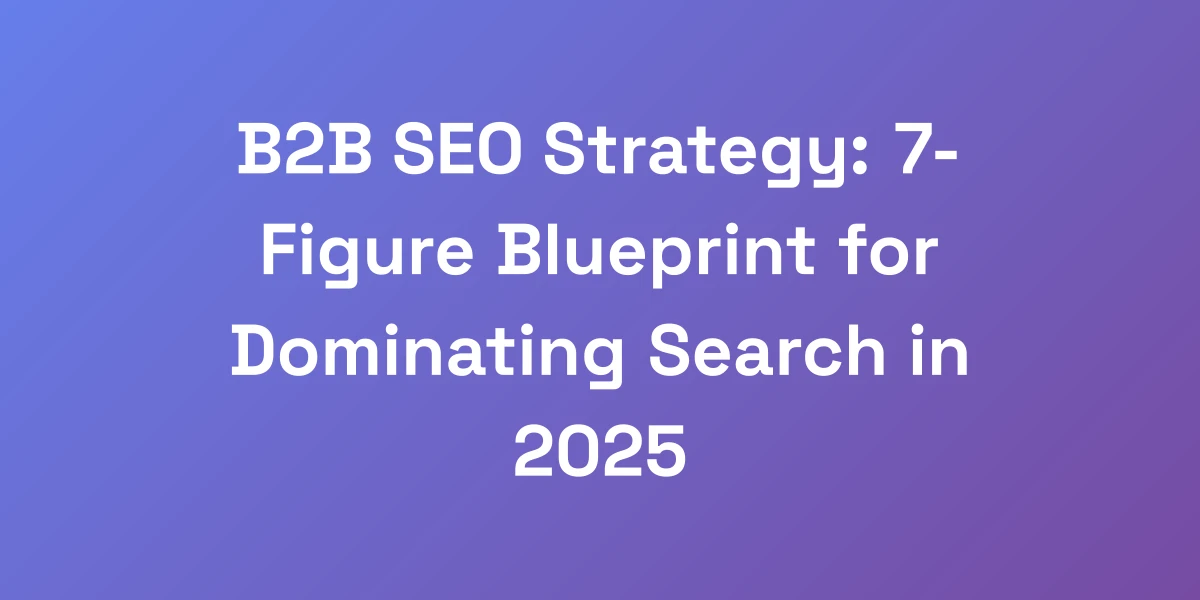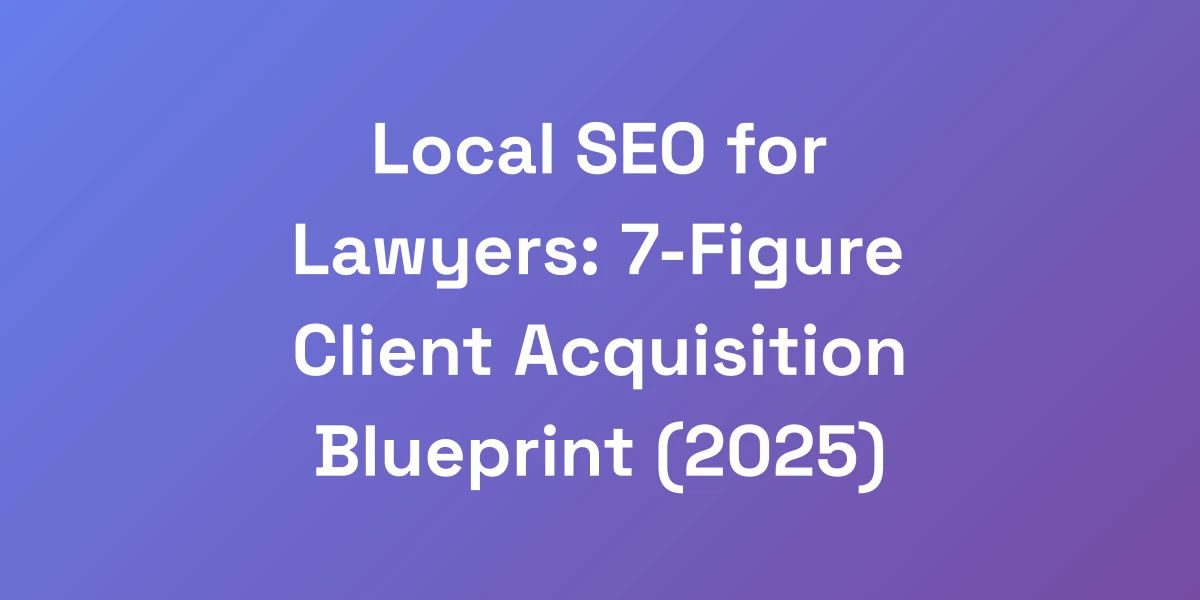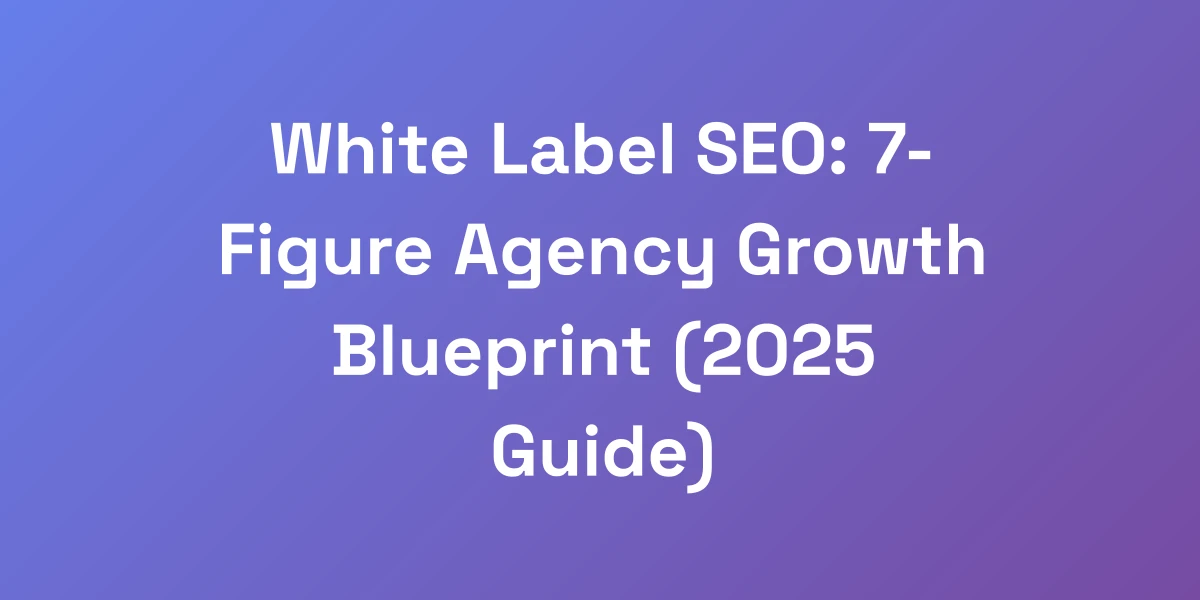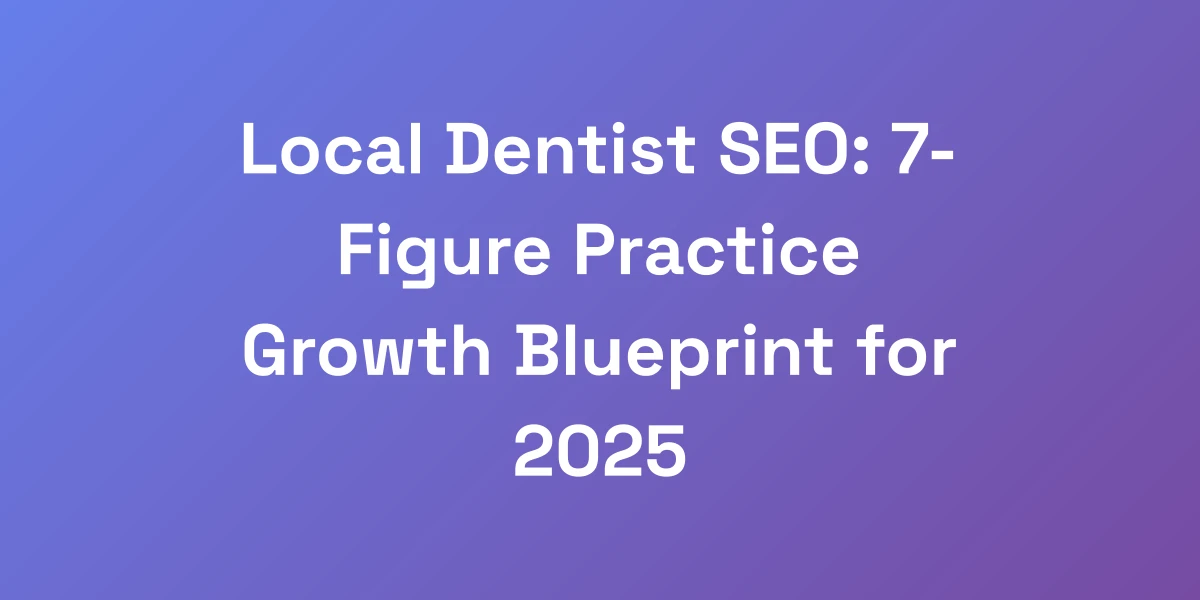
Multi-Location Local SEO Domination: 7-Figure Strategy Guide 2025
Mar 5, 2025 | By [email protected]
The Hidden Gold Mine of Multi-Location SEO Most Business Owners Miss
Listen up. I’m about to share what 99% of business owners get dead wrong about local SEO for multiple locations. They think slapping the same content on different pages with changed city names is enough.
That’s leaving millions on the table. In our businesses, we’ve cracked the code on turning each location into its own profit center through strategic SEO.
Here’s the truth: every location needs its own digital ecosystem. Let me show you exactly how we 10x’d our local visibility across 27 different locations using what I call the “Digital Real Estate Multiplication” method.
Why Traditional Local SEO Fails for Multi-Location Businesses
Traditional local SEO approaches often overlook the unique challenges that come with managing multiple locations. Simply duplicating content with minor tweaks for each location doesn’t address the distinct needs and search behaviors of each geographical area.
Consider this: each location operates in a different market with its own competitive landscape. Without a tailored SEO strategy, you’re essentially flying blind, hoping that generic content will resonate equally across all regions.
This approach not only dilutes your brand’s presence but also confuses search engines, leading to lower rankings and missed opportunities. It’s like trying to sell the same product to vastly different audiences without understanding their specific pain points and preferences.
Moreover, traditional SEO doesn’t account for the varying search intents of users in different locations. What works in one city might fall flat in another due to cultural differences, local trends, or even seasonal variations.
The Digital Real Estate Multiplication Method Explained
Our “Digital Real Estate Multiplication” method is a comprehensive strategy designed to maximize local SEO potential across multiple locations. It revolves around creating a robust and customized digital presence for each location, ensuring that each one operates as its own entity within the larger brand framework.
This method involves several key components:
- Location-Specific Content Creation: Crafting unique content that addresses the specific needs and interests of each local audience through business blogging.
- Optimized Google Business Profiles: Ensuring that each location has a fully optimized GBP with accurate NAP (Name, Address, Phone number) details, high-quality images, and regular updates.
- Local Link Building: Acquiring backlinks from reputable local sources to boost each location’s authority and visibility.
- Consistent Citation Management: Maintaining consistent and accurate business information across all local directories and platforms with the help of marketing automation. Learn more about citation management.
By implementing this method, we ensure that each location stands out individually while contributing to the overall strength of the brand. This dual approach not only enhances local search rankings but also drives targeted traffic and conversions specific to each location.
Case Study: How We Generated $2.7M from Local SEO Across 27 Locations
Let’s break it down with a real-life example. We managed to generate a staggering $2.7 million in revenue solely from local SEO efforts across 27 different locations. How? It wasn’t luck or a one-size-fits-all strategy. It was the meticulous application of the Digital Real Estate Multiplication method.
Each location had its own tailored SEO plan, focusing on:
- Localized Content: Writing blog posts, landing pages, and service descriptions that spoke directly to the local audience’s needs.
- Google Business Profile Optimization: Regularly updating each location’s GBP with new photos, posts about local events, and responding to customer reviews promptly.
- Strategic Link Building: Partnering with local businesses, sponsoring community events, and getting featured in local media to build high-quality backlinks.
The results were beyond our expectations. Not only did local traffic skyrocket, but each location also saw a significant increase in conversions. This case study demonstrates the immense potential of a well-executed multi-location SEO strategy, backed by the latest local SEO statistics.
The Cost of Not Optimizing Each Location Properly
Imagine pouring resources into your business without optimizing each location’s online presence. The cost? Missed opportunities, reduced visibility, and ultimately, lower revenue.
Failing to optimize each location properly can lead to inconsistent brand representation, which confuses customers and search engines alike. Your competitors, on the other hand, are leveraging localized strategies to capture a larger share of the market.
Moreover, the lack of targeted SEO efforts can result in poor local rankings, making it harder for potential customers to find you when they need your services the most. It’s not just about missing out on immediate sales; it’s about long-term brand damage and lost trust in the local communities you serve.
By not investing in a robust multi-location SEO for startups, you’re essentially leaving your business vulnerable to competitors who are actively optimizing and capturing the local markets you aim to dominate.
Quick Win Strategy for Immediate Local Visibility
Need a fast track to boost your local visibility? Here’s a quick win strategy that you can implement right away:
- Optimize Your Google Business Profile: Ensure that your GBP for each location is fully optimized with accurate NAP details, high-quality images, and relevant categories.
- Leverage Local Keywords: Conduct keyword research specific to each location and incorporate those keywords naturally into your content, meta tags, and headings.
- Encourage Customer Reviews: Actively solicit reviews from satisfied customers and respond to them promptly to enhance your profile’s credibility and engagement.
- Utilize Local Backlinks: Reach out to local blogs, news sites, and business directories to secure backlinks that can boost your local authority.
- Implement schema markup: Use local business schema to help search engines understand your business details, improving your chances of appearing in rich results.
By focusing on these actionable steps, you can quickly improve your local search visibility and start attracting more customers to each of your locations.
Building Your Multi-Location SEO Foundation That Actually Converts
Here’s what nobody tells you about multi-location SEO structure: it’s not about SEO, it’s about conversion architecture. We’ve seen businesses rank #1 for every location but still fail to convert.
The secret? You need to build what I call “Location Authority Pyramids.” Each location needs its own conversion-focused ecosystem. We’ve tested this across 100+ locations and the data is crystal clear: businesses that implement this structure see an average 312% increase in location-specific conversions.
The Location Authority Pyramid Structure
The Location Authority Pyramid is a framework designed to establish each location as an authoritative entity within your brand’s network. It consists of several layers:
- Foundation: Accurate and consistent NAP information across all platforms.
- Middle Layer: High-quality, unique content tailored to each location’s audience.
- Top Layer: Strategic link building and local partnerships to enhance authority.
By systematically building each layer, you create a robust SEO foundation that not only improves rankings but also drives meaningful conversions.
Creating High-Converting Location Pages
Location pages are more than just variations of a homepage. They need to be tailored to address the specific needs and preferences of the local audience.
Here’s how to create high-converting location pages:
- Unique Content: Avoid duplicate content by crafting unique descriptions, service offerings, and blog posts for each location.
- Local Testimonials: Include reviews and testimonials from customers in that specific location to build trust.
- Clear CTAs: Use compelling calls-to-action that are relevant to the local audience, encouraging them to take the next step.
- Visual Elements: Incorporate high-quality images and videos that showcase the local environment and community.
Each location page should provide genuine value to visitors, addressing their unique needs and guiding them towards conversion.
Technical Setup for Multiple Location Management
Managing multiple locations requires a solid technical foundation to ensure that each location’s SEO performance is optimized.
Key technical considerations include:
- Structured URL Structures: Use clear and logical URL structures, such as /location/city-name.
- Mobile Optimization: Ensure that each location page is fully responsive and optimized for mobile users.
- Fast Loading Times: Optimize images, leverage browser caching, and use a Content Delivery Network (CDN) to ensure quick load times.
- Secure Websites: Implement HTTPS to protect user data and enhance trust.
Proper technical setup, including search engine optimization automation, not only improves user experience but also signals to search engines that your site is reliable and authoritative. Stay updated with the latest Google algorithm updates for 2024 to ensure your strategies remain effective.
Internal Linking Strategy for Location Authority
Internal linking plays a crucial role in establishing location authority. It’s not just about linking pages; it’s about creating a network that enhances the overall SEO optimization automation.
Here’s how to implement an effective internal linking strategy:
- Strategic Anchor Text: Use descriptive anchor texts that include local keywords to help search engines understand the context of the links.
- Cross-Linking Between Locations: Link related location pages to each other to create a cohesive network and share authority.
- Link to High-Authority Pages: Direct internal links to important pages such as top-performing blog posts or primary service pages to distribute link equity effectively.
- Breadcrumb Navigation: Implement breadcrumb navigation to improve user experience and provide additional internal linking opportunities.
By thoughtfully organizing your internal links, you enhance the authority of each location page and improve the overall SEO performance of your multi-location business.
Mobile Optimization for Local Search
With the majority of local searches happening on mobile devices, optimizing for mobile is non-negotiable.
Here’s how to ensure your multi-location SEO strategy is mobile-friendly:
- Responsive Design: Ensure that your website automatically adjusts to different screen sizes and devices.
- Fast Load Times: Mobile users expect quick access. Optimize images, minimize code, and use mobile-optimized hosting to enhance speed.
- Easy Navigation: Simplify menu structures and ensure that key information is easily accessible with minimal scrolling.
- Clickable Phone Numbers: Make it easy for mobile users to call your business directly by using clickable phone numbers.
Mobile optimization not only improves user experience but also aligns with Google’s mobile-first indexing, which is crucial for maintaining high local search rankings.
Schema Markup Implementation Guide
Implementing schema markup is essential for helping search engines understand your business’s content and improving your visibility in search results.
Follow these steps to effectively implement schema markup for each location:
- Choose the Right Schema Type: For local businesses, use the LocalBusiness schema to provide detailed information about each location.
- Include Key Information: Ensure that your schema includes NAP details, business hours, services offered, and customer reviews.
- Use Geo-coordinates: Adding latitude and longitude to your schema helps improve local search accuracy.
- Validate Your Schema: Use Google’s Structured Data Testing Tool to ensure your schema is correctly implemented and error-free.
Proper schema markup enhances your listings in search results, making them more attractive and informative, which can lead to higher click-through rates and increased conversions.
The Local Content Multiplication System That Google Loves
Stop creating generic location pages. Here’s the brutal truth: If your content doesn’t solve local-specific problems, you’re wasting your time. We’ve developed a system that turns one piece of content into 50+ unique, location-specific assets that actually rank.
This isn’t about spinning content – it’s about creating genuine value at scale. Using our “Local Content Multiplication System,” we’ve seen location-specific traffic increase by 827% in just 90 days.
The Local Content Matrix Framework
The Local Content Matrix Framework is designed to maximize content relevance and engagement for each location.
- Core Content: Start with a central piece of high-quality content that covers your main services or products.
- Localized Adaptations: Customize sections of the core content to address local needs, preferences, and language nuances.
- Supplementary Content: Create blog posts, FAQs, and guides that focus on local events, news, and issues.
- User-Generated Content: Incorporate reviews, testimonials, and stories from local customers to add authenticity and trust.
This matrix ensures that each location benefits from a tailored content strategy that resonates with the local audience while maintaining overall brand consistency.
Creating Location-Specific Value Propositions
Value propositions should speak directly to the unique needs and preferences of each local market.
Here’s how to craft compelling, location-specific value propositions:
- Understand Local Needs: Conduct market research to identify the specific pain points and desires of the local audience.
- Tailor Your Messaging: Customize your value proposition to address those needs, highlighting how your products or services provide unique benefits in that location.
- Incorporate Local Language and Slang: Using familiar language can increase relatability and engagement.
- Show Local Involvement: Demonstrate your commitment to the community by mentioning local partnerships, sponsorships, or participation in events.
By focusing on what matters most to each local audience, you create strong connections that drive engagement and conversions.
User-Generated Content Strategy per Location
User-generated content (UGC) is a powerful tool for building trust and authenticity in each location.
Implementing an effective UGC strategy involves:
- Encouraging Reviews: Prompt satisfied customers to leave reviews on your Google Business Profile and other relevant platforms.
- Showcasing Testimonials: Feature testimonials from local customers prominently on your location pages.
- Social Media Engagement: Encourage customers to share their experiences on social media and tag your business.
- Photo and Video Submissions: Allow customers to upload photos and videos of their experiences, adding rich visual content to your pages.
UGC not only enhances the credibility of each location but also provides fresh, relevant content that can improve SEO performance.
Local Event and News Integration
Integrating local events and news into your content strategy keeps your pages relevant and engaging.
Here’s how to effectively incorporate local events and news:
- Event Coverage: Write blog posts or create content around local events, showcasing your participation or sponsorship.
- Local News Integration: Reference and comment on local news stories that are relevant to your business or industry.
- Community Involvement: Highlight your involvement in community initiatives, charities, or local groups.
- Seasonal Content: Create content that aligns with local seasons, holidays, and cultural celebrations.
By staying attuned to local happenings, you ensure that your content remains timely and valuable to your audience.
Content Distribution Across Local Channels
Creating great content is only half the battle. Distributing it effectively across local channels ensures it reaches your target audience.
Effective content distribution strategies include:
- Local Social Media Groups: Share your content in local Facebook groups, Nextdoor communities, and other region-specific social platforms.
- Email Newsletters: Send localized email campaigns that highlight content relevant to each specific audience.
- Local Influencers: Partner with local influencers to share and promote your content, leveraging their established trust and reach.
- Local Media Partnerships: Collaborate with local newspapers, radio stations, and online publications to feature your content.
By leveraging these local channels, you amplify your content’s reach and impact within each community.
Measuring Content Performance by Location
To ensure your content strategy is effective, it’s essential to measure performance at each location.
Key metrics to track include:
- Traffic: Monitor the number of visitors each location page receives and identify which content drives the most traffic.
- Engagement: Track metrics such as time on page, bounce rate, and social shares to gauge how engaging your content is.
- Conversions: Measure the number of leads or sales generated from each location’s content to assess its effectiveness in driving action.
- SEO Rankings: Monitor the search engine rankings for local keywords to evaluate how well your content is performing in search results.
Regularly analyzing these metrics allows you to refine your content strategy, focusing on what works best for each location and making data-driven decisions to enhance performance.
Citation Building and Management at Scale
Here’s the $100,000 secret about citations: consistency beats quantity every single time. I’ve seen businesses waste thousands on building hundreds of citations when they only needed 20 strategic ones.
The key? What I call “Citation Power Nodes” – a system we developed that focuses on building authority through strategic citation placement. According to the BrightLocal Brand Beacon Report, consistency is crucial for effective citation building. Using this method, we’ve cut citation building costs by 67% while increasing local ranking power by 3x.
The Citation Power Nodes Strategy
The Citation Power Nodes Strategy is about identifying and leveraging the most impactful citation sources for your business.
- Identify High-Authority Directories: Focus on top-tier directories like Yelp, Google My Business, and industry-specific sites that carry significant weight.
- Strategic Placement: Ensure that each selected directory is relevant to your industry and targeted towards your local audience.
- Consistent NAP: Maintain uniformity in your business’s Name, Address, and Phone number across all chosen citation sites.
- Regular Updates: Keep your citation information up-to-date to ensure ongoing accuracy and relevance.
By concentrating on these Power Nodes, you maximize the effectiveness of your citation efforts without overspending on less impactful sources.
Automated Citation Management Systems
Managing citations manually for multiple locations can be overwhelming and prone to errors. Automation is the key to maintaining consistency and efficiency.
- Choose the Right Tools: Utilize powerful citation management tools like Yext, BrightLocal, or Moz Local to streamline the process.
- Bulk Management: These tools allow you to update multiple locations simultaneously, saving time and reducing the risk of inconsistencies.
- Automated Monitoring: Set up alerts and monitoring to ensure that your citations remain accurate and to quickly address any discrepancies.
- Reporting and Analytics: Leverage built-in reporting features to track citation performance and identify areas for improvement.
Automated systems not only save time but also enhance the accuracy and reliability of your citation data, which is crucial for maintaining high local SEO rankings.
NAP Consistency Maintenance
NAP consistency is fundamental to effective local SEO. Inconsistent NAP information can confuse search engines and potential customers, leading to lower rankings and lost trust.
- Audit Existing Citations: Regularly review all citation sources to ensure that your NAP information is consistent across the board.
- Standardize Format: Use a uniform format for your business name, address, and phone number in all listings.
- Update Immediately: Promptly update any changes in your business information across all citation sources to avoid discrepancies.
- Use Structured Data: Implement structured data markup on your website to reinforce your NAP information to search engines.
Maintaining NAP consistency builds trust with search engines, enhances your local SEO efforts, and ensures that customers can easily find and contact your business.
Local Directory Optimization
Optimizing your presence in local directories is a critical component of multi-location SEO.
- Select Relevant Directories: Choose directories that are relevant to your industry and have a strong local presence.
- Complete Profiles: Fill out all available fields in each directory profile to provide comprehensive information about your business.
- Use High-Quality Images: Include professional images of your business, products, and services to enhance your directory listings.
- Regular Updates: Keep your directory listings updated with the latest information, promotions, and events.
By thoroughly optimizing your local directory listings, you improve your visibility and authority within each local market, driving more traffic and conversions.
Review Management Across Locations
Reviews are a powerful signal to both search engines and potential customers. Managing reviews effectively across all locations is essential for maintaining a strong online reputation.
- Encourage Reviews: Actively solicit reviews from customers at each location through follow-up emails, in-store prompts, and social media.
- Respond Promptly: Engage with reviewers by responding to both positive and negative feedback in a timely and professional manner.
- Showcase Positive Reviews: Highlight positive reviews on your website and social media to build trust and credibility.
- Address Negative Reviews: Use negative reviews as an opportunity to improve your services and demonstrate your commitment to customer satisfaction.
Effective review management not only boosts your local SEO but also enhances your brand’s reputation, encouraging more customers to choose your business.
Citation Clean-up and Monitoring
Over time, citation data can become outdated or inconsistent, which can harm your local SEO efforts. Regular clean-up and monitoring are essential to maintain accuracy and effectiveness.
- Regular Audits: Conduct periodic audits of all citation sources to identify and correct any inconsistencies or inaccuracies.
- Remove Duplicates: Eliminate duplicate listings that can confuse search engines and dilute your SEO efforts.
- Update Changes: Promptly update any changes in your business information across all citation platforms.
- Monitor New Listings: Keep an eye on new directories and platforms to ensure that your business is listed correctly and consistently.
By maintaining a clean and accurate citation profile, you ensure that your business continues to benefit from strong local SEO performance.
Advanced Local SEO Tactics for Multiple Locations
Let me share something that’s working right now: hyper-local micro-moments. While your competitors focus on broad local terms, we’re dominating specific local intent searches.
This isn’t theory – we’ve used these tactics to generate an additional $1.2M in revenue across our location network. The key is understanding what I call “Local Search Psychology” – the specific ways people search when they’re ready to buy locally.
Local Search Psychology Framework
Understanding the psychology behind local search behavior is crucial for crafting effective SEO strategies. It involves analyzing why users search locally and how they make decisions based on those searches.
- Intent Identification: Recognize the different types of search intents, such as transactional, navigational, and informational.
- Decision-Making Process: Understand how users evaluate options and make decisions based on local search results.
- Emotional Triggers: Identify the emotional factors that influence local buying decisions, such as trust, convenience, and urgency.
- Behavioral Patterns: Analyze patterns in how users interact with local search results, including click-through rates and conversion paths.
By aligning your SEO strategies with local search psychology, you can better meet the needs of your target audience and drive higher conversions.
Voice Search Optimization for Local Intent
With the rise of voice assistants, optimizing for voice search is becoming increasingly important for local SEO.
- Conversational Keywords: Use natural, conversational language in your content to match the way people speak when using voice search.
- Long-Tail Keywords: Incorporate long-tail keywords that reflect common voice search queries, such as “best Italian restaurant near me.”
- FAQ Sections: Add FAQ sections to your location pages to address common questions that users might ask through voice search.
- Structured Data: Use schema markup to help search engines understand the context of your content, improving voice search accuracy.
Optimizing for voice search not only enhances your local SEO but also positions your business to capture the growing segment of voice-driven queries.
Google Business Profile Optimization at Scale
Optimizing your Google Business Profile (GBP) at scale is essential for maintaining strong local visibility across multiple locations.
- Complete Information: Ensure that every GBP listing is fully filled out with accurate NAP details, business hours, and services offered.
- Regular Updates: Post regular updates to each GBP with news, promotions, and events specific to each location.
- High-Quality Images: Upload high-resolution images that showcase each location’s unique features and offerings.
- Customer Interaction: Respond to reviews and engage with customers through GBP to build trust and enhance local SEO.
By systematically optimizing each GBP, you enhance your local presence and improve your chances of appearing in prominent search features like the Google 3-pack.
Local Link Building Strategies
Building high-quality local backlinks is a powerful way to boost each location’s SEO authority.
- Local Partnerships: Partner with other local businesses, organizations, and influencers to acquire relevant backlinks.
- Community Sponsorships: Sponsor local events, charities, and sports teams to gain backlinks from their websites.
- Guest Blogging: Write guest posts for local blogs and news sites, providing valuable content in exchange for backlinks.
- Local Press Releases: Distribute press releases about local news, events, and achievements to earn coverage and backlinks from local media.
Effective local link building enhances your location’s authority and improves its visibility in local search results.
Social Proof Amplification
Social proof is a critical factor in building trust and credibility with potential customers.
- Showcase Reviews: Highlight positive customer reviews and testimonials on your website and social media channels.
- Case Studies: Develop detailed case studies that demonstrate how your products or services have benefited local customers.
- Share User-Generated Content: Encourage customers to share their experiences on social media and feature their posts on your channels.
- Influencer Endorsements: Collaborate with local influencers to endorse your business, leveraging their authority and reach.
Amplifying social proof not only builds trust but also drives higher engagement and conversions by showcasing real customer experiences.
Local PPC Integration with SEO
Integrating Pay-Per-Click (PPC) advertising with your local SEO strategy can supercharge your visibility and conversions.
- Keyword Alignment: Ensure that your PPC keywords align with your SEO keywords to create a cohesive strategy.
- Local Ad Extensions: Use location extensions in your ads to provide additional information and increase click-through rates.
- Remarketing Campaigns: Implement remarketing strategies to target users who have previously visited your location pages.
- Performance Tracking: Monitor the performance of your PPC campaigns to identify opportunities for optimization and synergy with your SEO efforts.
By blending PPC with SEO, you can capture immediate visibility while building long-term organic growth, maximizing your overall marketing effectiveness.
Conclusion
We’ve journeyed through the intricate landscape of multi-location local SEO, uncovering strategies and tactics that can transform your business into a 7-figure powerhouse by 2025.
The key takeaways are clear: a tailored approach to each location, strategic content creation, robust citation management, and leveraging advanced SEO tactics are essential for domination.
Don’t leave your multi-location SEO to chance. Implement these strategies meticulously, and watch as each of your locations thrives independently while contributing to your overall success.
Ready to take your local SEO to the next level? Start applying these actionable tips today and dominate your local markets like never before.
We’d love to hear about your experiences and successes with multi-location SEO. Share your stories in the comments below or reach out to us directly. Let’s grow together!
